The El Castillo Caves in Cantabria, Spain, offer a remarkable window into the artistic and cultural achievements of our Paleolithic ancestors. Boasting cave paintings over 40,000 years old, this UNESCO World Heritage site provides invaluable insights into the symbolic thought and creativity of early humans. Visitors can embark on guided tours to explore the intricate artworks and learn about the daily lives and spiritual beliefs of these prehistoric societies. While the caves themselves are a captivating draw, there’s more to discover in the surrounding region that sheds light on this pivotal chapter of human history.
Good To Know
- The El Castillo Caves in Cantabria, Spain, are a UNESCO World Heritage site renowned for their exceptional Paleolithic cave art, dating back over 40,000 years.
- The caves, comprising El Castillo and Las Monedas, provide valuable insights into the lives and cultural practices of Paleolithic humans and the development of human creativity.
- Guided tours of the caves, available in Spanish and English, offer a comprehensive understanding of the region’s cultural heritage and the significance of the Paleolithic art.
- The tour experience includes visits to the nearby Puente Viesgo village and the Museum of Vega de Pas, which showcase the local architecture, traditional crafts, and daily life of the Pasiega people.
- The caves may present accessibility challenges for individuals with certain health conditions, and visitors are advised to consider their physical limitations before participating in the tour.
Location and Significance
Nestled in the heart of Cantabria, Spain, the El Castillo Caves are a UNESCO World Heritage site that have captivated visitors for decades.
These prehistoric caves are renowned for their exceptional cave art, with paintings dating back over 40,000 years.
The site includes two key caves: El Castillo and Las Monedas, both of which showcase the remarkable artistic talents of our ancient ancestors.
The caves’ significance lies in their ability to provide a window into the lives and cultural practices of Paleolithic humans, offering invaluable insights into the dawn of human creativity and the development of symbolic thought.
Tour Group and Duration
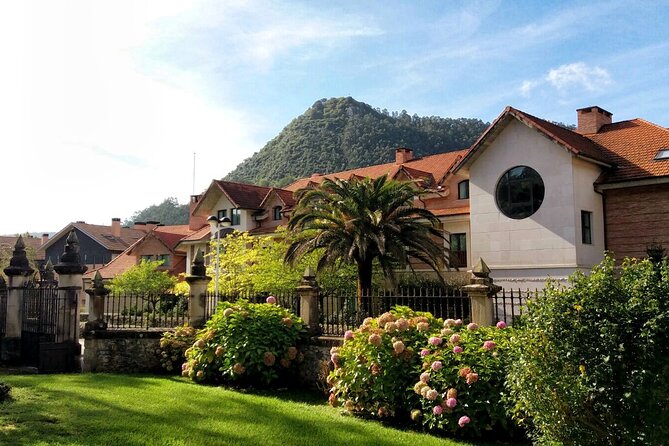
Visitors to the El Castillo Caves can expect an intimate tour experience, with group sizes limited to just 8 people. This ensures a personalized exploration of the UNESCO-listed caves.
The regular tours are conducted in Spanish, but private tours in English are available upon request. Each cave visit lasts approximately one hour, allowing ample time to appreciate the remarkable Paleolithic art within.
Along With the cave visits, the tour includes stops at the nearby Puente Viesgo village and the Museum of Vega de Pas, providing a well-rounded understanding of the region’s rich cultural heritage.
Transportation and Logistics
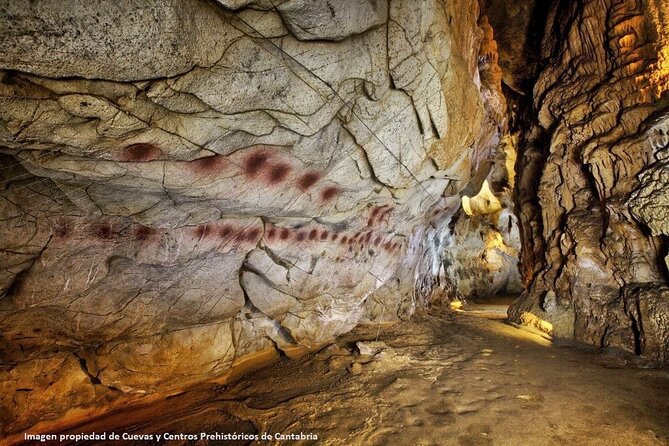
The tour operator provides door-to-door service from your Santander hotel, transporting you in a private vehicle to the El Castillo Caves.
Once there, a professional driver/guide accompanies you throughout the experience.
The logistics are straightforward – you’ll receive your confirmation within 48 hours of booking, subject to availability.
And if plans change, you can cancel free of charge up to 24 hours before the tour.
Multilingual Offerings
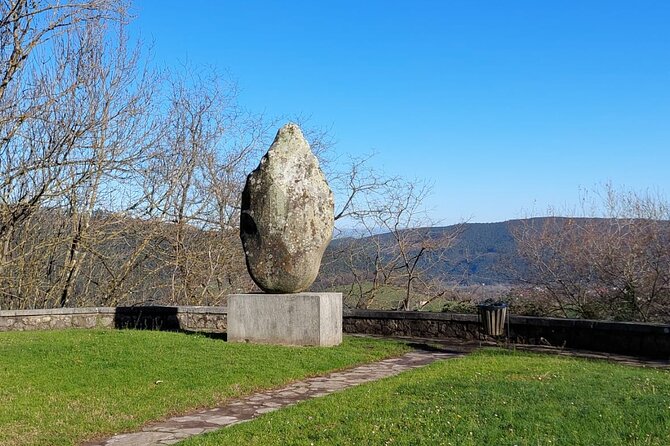
They offer regular tours conducted in Spanish, but private tours in English are available upon request. This allows both Spanish and English-speaking visitors to fully appreciate the significance of the El Castillo Caves and their remarkable Paleolithic art.
The multilingual offerings include:
- Spanish-language group tours for the general public.
- Private tours in English, catered to the needs of international travelers.
- Knowledgeable guides who often translate between Spanish and English during the visits.
This accessibility caters to a wide range of visitors, ensuring that everyone can enjoy the rich cultural heritage and ancient artistry preserved within the UNESCO-listed caves.
Traveler Experiences and Feedback
Glowing reviews from past travelers underscore the uniqueness and informative nature of the El Castillo Caves experience.
Visitors consistently praise the knowledgeable and helpful guides, who often translate Spanish for English-speaking travelers, enhancing the overall experience.
The caves are described as historically significant, with the guided tours providing valuable insights into the Paleolithic art that dates back 40,000 years.
Multilingual support is available, catering to the diverse needs of international travelers.
Health and Safety Considerations
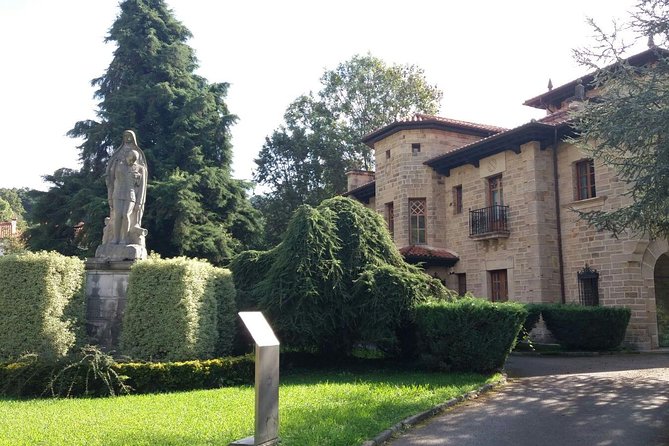
Prospective visitors should be aware that the El Castillo Caves may not be suitable for individuals with certain health conditions.
The caves aren’t recommended for those with heart problems, serious medical conditions, or back issues. Plus, pregnant travelers are advised against participation.
However, most travelers can participate without issue, as infant seats are available for those visiting with young children.
The key health and safety considerations are:
- Visitors with heart problems or serious medical conditions should avoid the caves.
- Pregnant women aren’t recommended to visit the caves.
- Those with back issues may find the cave environment challenging.
Explore Puente Viesgo Village
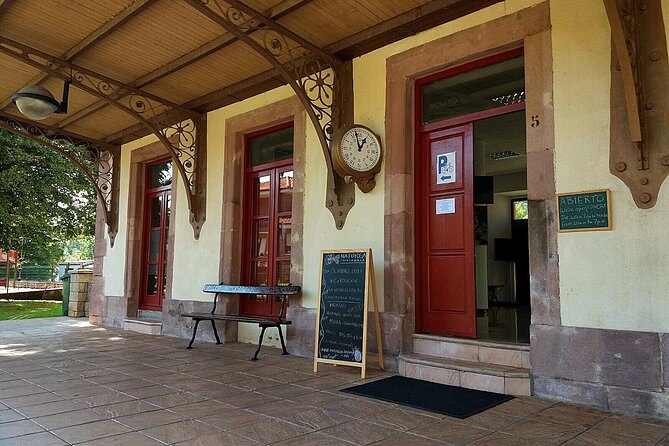
After exploring the captivating El Castillo Caves, visitors can venture to the nearby Puente Viesgo village. This charming town offers a glimpse into the region’s rich cultural heritage. Visitors can stroll through the quaint streets, admire the traditional Cantabrian architecture, and visit the Museum of Vega de Pas, which showcases the area’s history and way of life.
| Highlights | Description |
|---|---|
| Cantabrian Architecture | Admire the distinctive local building styles. |
| Museum of Vega de Pas | Discover the region’s history and cultural traditions. |
| Scenic Landscapes | Enjoy the picturesque surroundings of the village. |
| Local Cuisine | Savor the flavors of traditional Cantabrian dishes. |
The combination of the cave art’s ancient allure and the village’s authentic charm makes for an unforgettable cultural experience.
Museum of Vega De Pas
The Museum of Vega de Pas provides visitors with an in-depth exploration of the region’s rich cultural heritage. Housed in a traditional Pasiega farmhouse, the museum showcases the area’s pastoral traditions, including:
-
Displays on local architecture, such as the iconic masonry bridges and stone houses.
-
Exhibits on traditional crafts like basket weaving and blacksmithing.
-
Insights into the daily life and customs of the Pasiega people.
The museum’s knowledgeable staff offer guided tours, allowing visitors to delve deeper into the history and significance of the Vega de Pas valley.
This cultural experience complements the visit to the nearby El Castillo Caves, providing a well-rounded understanding of the region’s Paleolithic legacy.
Frequently Asked Questions
Can I Bring My Own Food and Drinks on the Tour?
Based on the information provided, it doesn’t appear that bringing your own food and drinks is permitted on the tour. The tour includes transportation and a professional guide, but there’s no mention of any food or beverage inclusions.
Is There a Minimum Age Requirement for the Cave Visit?
There is no minimum age requirement for the cave visit. However, the tour operator advises against participation for pregnant travelers. Infant seats are available for those traveling with young children.
Are There Any Physical or Mobility Restrictions for the Tour?
The tour isn’t recommended for those with heart problems, serious medical conditions, or back issues. Pregnant travelers are advised against participation, but infant seats are available for families with young children. Most travelers can participate without issue.
How Accessible Are the Caves for Individuals With Disabilities?
The caves aren’t fully accessible for people with disabilities. They have narrow, uneven paths which can be difficult to navigate. However, the tour operator may accommodate certain needs with prior arrangement.
Can I Take Photographs Inside the Caves?
Photography inside the caves is generally allowed, but flash photography is prohibited. Visitors should follow the guide’s instructions to preserve the delicate cave environment and ancient artworks. Private tours may offer more flexibility for photography.
Not for you? Here's more of our most recent tour reviews happening neaby
The Sum Up
The El Castillo Caves in Cantabria, Spain, offer a unique opportunity to explore the artistic and cultural treasures of Paleolithic societies. Visitors can enjoy the cave’s ancient paintings, gaining insights into the lives and beliefs of our ancestors. With guided tours, multilingual offerings, and nearby attractions, the El Castillo Caves provide an enriching experience for those interested in prehistoric art and human history.
